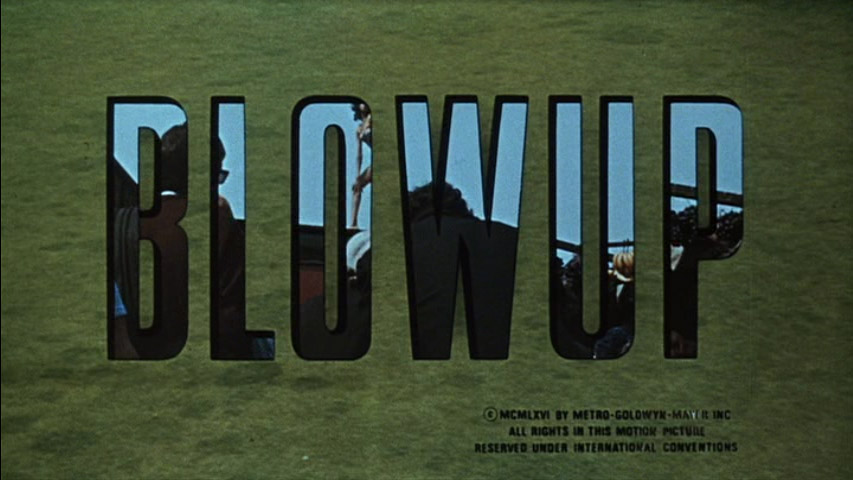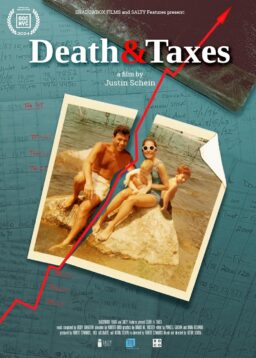It’s a game you get to play everywhere, because so many people have seen “Blow-Up,” and most of them want to talk about it. Movies that require you to figure things out for yourself always leave a lot of frustrated customers behind.
For example, I was talking to a lady the other day who had been taken to see “Blow-Up” by her husband, who heard David Hemmings was in it. The lady sighed and said, “Well, I suppose it was all terribly profound, and I just missed the point, right?”
“Right,” I said. What else could I say?
Then there are the people who say, “Well, of course, it was beautifully photographed, but it didn’t mean anything.” The thing to do with these people is to nod wearily and say, “You’re right. But, of course, the fact that it didn’t mean anything was what it meant.”
While they’re thinking that over, you can tackle the serious players of the Blow-Up Game. These are the people who have seen “Blow-Up” seven times and are wickedly expert. They know that there are two tennis games in the movie. They kept track of all those short-wave conversations David Hemmings had with himself.
A lot of these serious players labor under the delusion that there was a murder in “Blow-Up.” When you disagree, they snarl: “What do you mean, there wasn’t a murder? If there wasn’t a murder, then why was there a corpse?”
Before answering this question, which is a little embarrassing, perhaps we should be reminded once again that you can’t believe everything you see. We’ve all been brainwashed by thousands of Hollywood potboilers into believing that things in the movies make sense, just like things in real life. When you got a corpse on your hands, you got a murder on your hands – right?
Not necessarily. Movies are fictions created by their directors, who can do anything they please with their cameras – and, if they are very good, with their audiences.
Remember when Hemmings turns away from the antique shop and sees Vanessa Redgrave walk into the park with the gray-haired man? He follows them slowly, walking past the infamous tennis court, up the asphalt lane and across the grass. Then he sees them again, in the distance.
But Antonioni is not so far away. He cuts to a close-up of Vanessa, tugging the man’s arm playfully. Then he cuts back to Hemmings, who shoots several photos from a distance of about 100 yards.
Vanessa turns and sees Hemmings. She leaves the man and runs toward him. We are to see all of these actions later, in Hemmings’ blown-up photos, and so we reconstruct the scene from his point of view. But just at this moment, Antonioni cuts to a position close behind the gray-haired man, who turns to watch Vanessa running toward Hemmings. The man is on his feet and very uncorpselike.
Later, of course, Hemmings blows up his photos and thinks he sees a hand and a gun in a grove of trees opposite the man. In another photo, he seems to find Vanessa looking at the gun. In still another, it looks as if there may be a body on the ground.
Hemmings returns to the darkroom, makes more blow ups, convinces himself, goes back to the park, and finds the corpse on the ground. Then he returns to his studio and finds the photos gone. The next morning, he returns to the park and the corpse is gone. After this visit he walks down to the tennis court just as the celebrating university students drive up in their jeep.
As he watches, they begin a pantomime tennis game, without a ball. At first all you hear are scuffling feet. The phantom ball flies out of the court. Hemmings, joining in the game, pretends to return it. Then the camera turns away from the game and moves in for a close-up of Hemmings’ face. At this point you begin to hear a tennis ball bouncing.
Antonioni is being tricky. Who hears the tennis ball? The students? Only Hemmings? Or – only the audience? Poor Hemmings doesn’t know what to believe by now, and no wonder. He’s going to disappear himself in 30 seconds. Antonioni pulls his camera away, high up into the sky, and we see Hemmings down there on the grass, a pitiful little figure. Then – pssst! – he’s gone.
This final disappearance, in a film where things are constantly disappearing, is a clue. What Antonioni may be trying to remind us is that he retains complete control of everything in his film. Why, he can even make the hero disappear if he wants to!
But what about those photos? Didn’t they show the whole murder, right there on film? Well, perhaps they did, but it was a funny thing about those photos.
They started out as perfectly good pictures of the scene in the park. But the more Hemmings blew them up, the less they really revealed. Finally he reached full magnification, and they were nothing more than masses of dots – just like the unsatisfactory paintings of his artist friend, who lived across the alley.
I’m not sure it really matters whether there was a murder or not, but when I’m closely pressed by players of the Blow-Up Game, I suggest that Hemmings’ camera photographed a murder and Antonioni’s did not, even though both were aimed at the same place in space and time. This disparity may be a subtle pun, built right into the film. Is Antonioni trying to tell us that the more we blow up “Blow-Up,” the less we will be able to learn about it?
If that is so, then what conclusion can we draw? My guess, a pretty obvious one, is that Antonioni is trying to demonstrate the unreality of modern life. We depend to a fantastic degree upon the media to tell us what is real. An event does not happen unless it is photographed, filmed, televised, and written up in the newspaper.
Perhaps Antonioni is suggesting that the media have gone wild, creating events that never happened and leaving real events unreported. Perhaps he is saying that many of us, like his photographer, would not know what to do if we were confronted by reality and didn’t have the tube or Time magazine to tell us what to think about it.
All of this may be metaphysical doubletalk, but that’s what playing the Blow-Up Game will do to you. I suppose we should be thankful that a director like Antonioni comes along once in a while with a movie sufficiently complex to be worth talking about.
But if you want an easy answer, I heard a great one the other day from a guy who was new to the Blow-Up Game, but enthusiastic and willing to stick his neck out.
“That wasn’t a man with a gun in the bushes,” he explained. “That was Antonioni with his hand-held camera, getting the shots in the other direction.”
Tennis, anyone?












